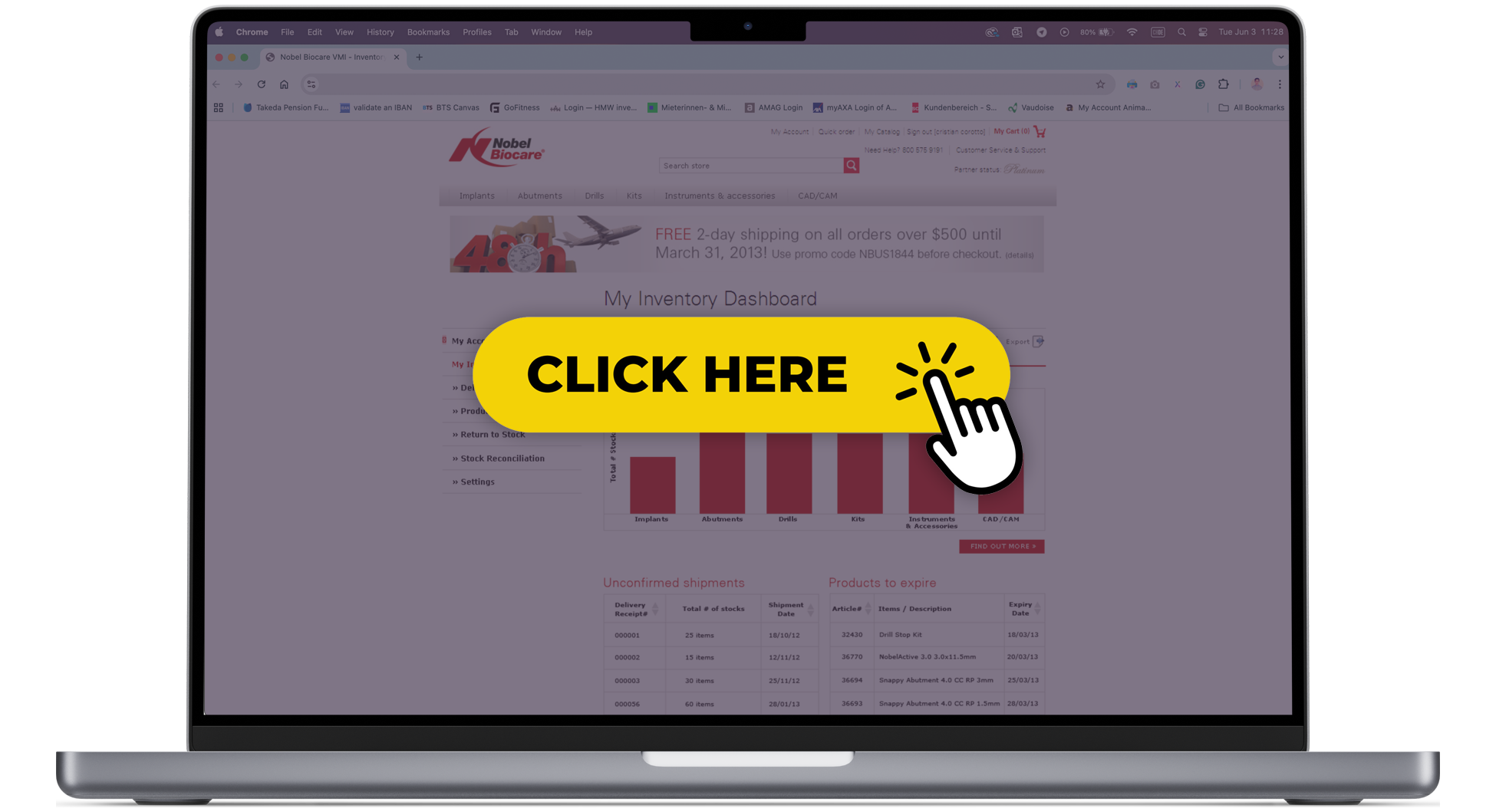
Problem Statement
Dental clinics often face challenges in managing their inventory of dental implants and related components. These challenges include:
- Manual inventory tracking where clinics rely on manual processes, leading to errors, inefficiencies, and overstocking or understocking
- High inventory costs. Clinics tie up significant capital in maintaining large inventories due to unpredictable demand.
- Time-consuming reordering processes. Staff spend valuable time placing orders and managing stock levels.
- Lack of visibility - Nobel Biocare lacked real-time insights into clinic inventory levels, leading to inefficiencies in supply chain management.
To address these issues, Nobel Biocare aimed to implement an RFID-based VMI system that would automate inventory tracking and replenishment while providing real-time data visibility.
UX Goals
- Simplify inventory management: Create an intuitive system that automates inventory tracking and reduces manual effort for clinic staff.
- Enhance user adoption: Design a user-friendly interface and workflow that aligns with the daily operations of dental clinics.
- Improve operational efficiency: Enable real-time inventory visibility and automated reordering to reduce stockouts and overstocking.
Research and Insights
The project began with conducting user research to understand the workflows, pain points, and needs of dental clinics. Key activities included:
- Stakeholder interviews where I have conducted interviews with clinic staffs, including dentists, receptionists, and inventory managers, to map their current processes and challenges.
- I've also conducted process mapping where I analyzed the implant treatment and inventory management workflows at pre-selected clinics to identify inefficiencies and identify gaps in the current workflows.
- Usability testing in which I observed how clinic staffs interacts with existing inventory systems and identified areas for improvement.
- Conducted competitor analysis by reviewing other VMI and RFID solutions in healthcare and medtech sectors to identify best practices and potential pitfalls.
Design Approach
Throughout the project, I acted as a bridge between the marketing, events, and technical teams, ensuring alignment on goals and timelines. I facilitated regular check-ins and feedback sessions to address challenges and incorporate stakeholder input, fostering a collaborative environment.
- Developing user personas and mapping user journeys.
- Wireframing and prototyping (see the clickable high-fidelity wireframe above).
- Iterative testing.
- Integrating with existing systems.
Outcomes
The RFID-based VMI system delivered significant benefits for both Nobel Biocare and its customers.
Clinics:
- Reduced manual effort and errors in inventory management.
- Improved inventory turnover and reduced capital tied up in stock.
- Enhanced planning and scheduling for surgeries, minimizing delays.
Nobel Biocare:
- Gained real-time visibility into clinic inventory levels, enabling better demand forecasting.
- Strengthened customer relationships by providing a value-added service.
- Reduced supply chain inefficiencies and improved operational performance.
Key Take-Aways:
The RFID-enabled VMI system for Nobel Biocare exemplifies the power of user-centric design in transforming complex workflows into seamless, efficient processes. By prioritizing the needs of clinic staff and integrating advanced technology, the project successfully addressed key pain points and delivered measurable value to all stakeholders. This case highlights the importance of collaboration, research, and iterative design in creating solutions that drive adoption and long-term success.
- Core skills:
- UX Design
- Prototyping
- Solution Design
- User Research
- User Testing
- Design Principles
- User Journey Mapping